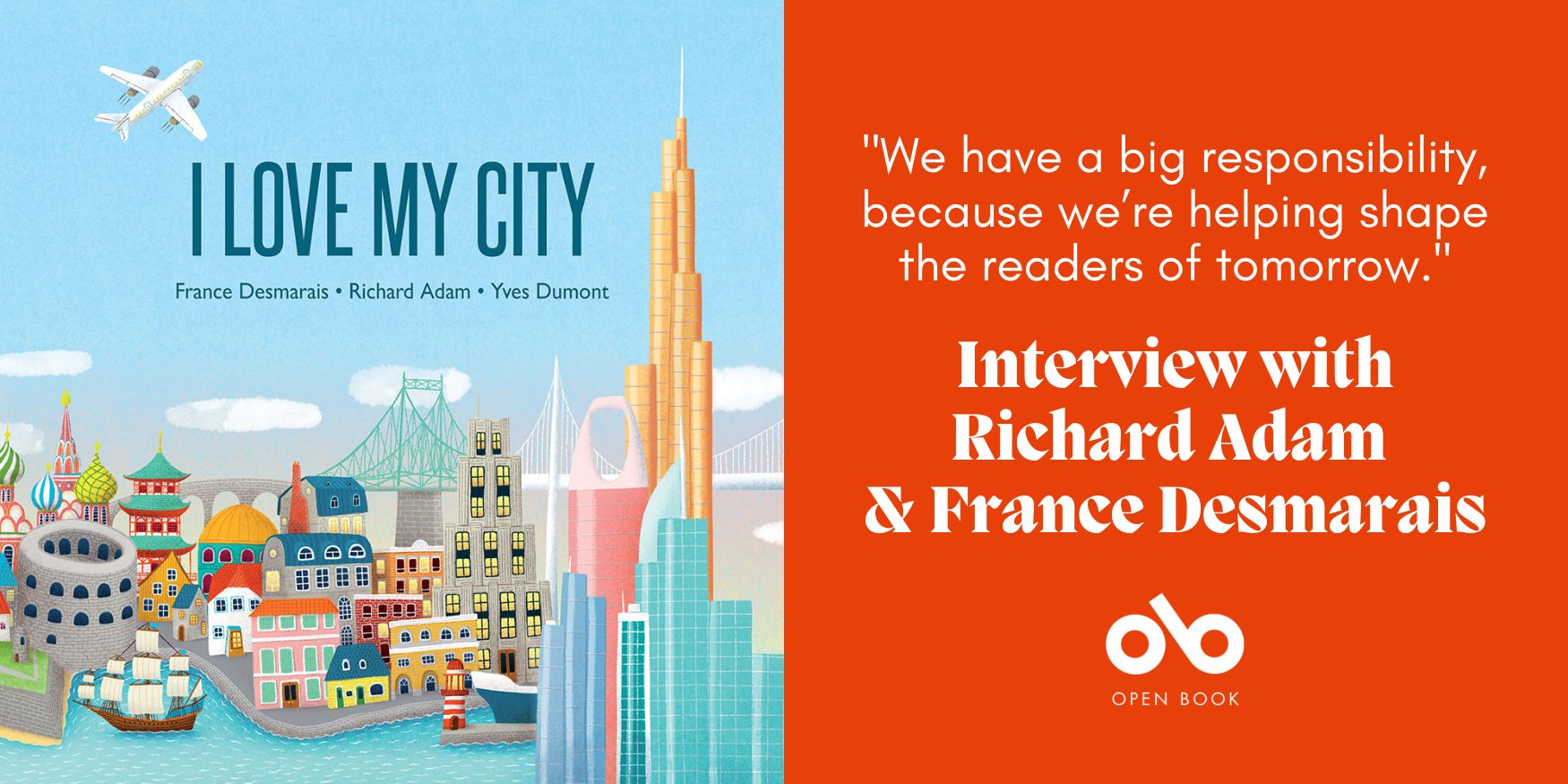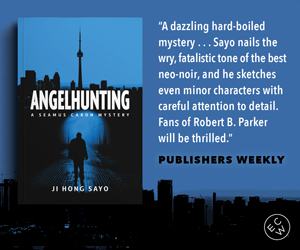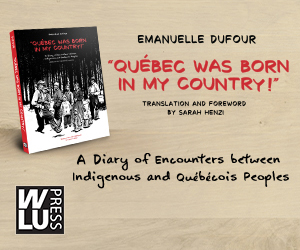Co-writers & Couple of 38 Years Richard Adam and France Desmarais Help Kids Love & Explore Urban Spaces
How many times have you read a book set against a city backdrop and felt, by the end, that the city itself served as a character? A city can be a living and breathing thing – or as kids' books co-creators and partners Richard Adam and France Desmarais put it, a "wonderful ecosystem". And it's something they want to get kids excited about: why and how playgrounds get built, how we get drinking water from our taps, even how streetlights get their energy.
Their creation, the beautifully illustrated nonfiction book, I Love My City (Pajama Press, with joyful artwork by Yves Dumont), is a love letter to urban spaces, packed with interesting facts for curious kids and laid out with irresistibly fun graphics.
We spoke with Adam, who holds master’s degrees in architecture and public administration and spent over three decades with the City of Montreal, and Desmarais, who holds master’s degree in art studies and worked extensively in the museum sector. They told us about about what it was like creating a book with one's partner of 38 years (lots of work at the kitchen table), why they're fascinated by questions like "why aren’t all streets the same size?", and why it was a "beautiful project to carry out as a couple".
Open Book:
Tell us about your new book and how it came to be.
Richard Adam & France Desmarais:
First and foremost, we love cities. We love exploring them on foot, understanding how they work, discovering their history and their architecture.
We’ve noticed that there is a lot of youth literature in libraries and bookstores about the environment, ecology, nature, and rural life, but very few about cities, even though half of the world’s young people live in them.
We’ve been thinking of writing a nonfiction book on how cities work for a long time, and the opportunity finally arose!
OB:
Is there a message you hope kids might take away from reading your book?
RA & FD:
The city is a wonderful ecosystem where thousands, indeed millions, of people cohabit. For this to work, cities need proper planning and organizing. Our hope is that this book will teach young people about urban planning and the multiple services that cities offer in order to make life easier for its inhabitants.
For example, why aren’t all streets the same size? Why are there parks in residential neighbourhoods? Why aren’t schools built in industrial areas? How is drinking water distributed and how is the city supplied with energy?
Your CanLit News
Subscribe to Open Book’s newsletter to get local book events, literary content, writing tips, and more in your inbox
OB:
Did the book look the same in the end as your originally envisioned it when you started working, or did it change through the writing process?
RA & FD:
Oh, not at all! We drank a lot of tea and exchanged many ideas and talked about which topics should be included before coming up with a final writing plan. The project evolved while we were researching and writing. In fact, once the book had been edited and we were organizing our final notes and work documents, we were surprised to see just how much the writing plan had evolved over the course of the year it took us to complete the project.
OB:
Is there an element of your book that you relate to personally?
RA & FD:
This nonfiction book reflects who we both are. Richard has a background in urban planning and architecture and worked in municipal administration. France has a background in art and has worked in youth literature for 20 years. This project allowed us to combine our professional expertise. On a more personal note, it was a beautiful project to carry out as a couple.
OB:
What was the strangest or most memorable moment or experience during the writing process for you?
RA & FD:
Although we’ve been living together for 38 years, it was a challenge to have so many cooks writing a single book. Richard focused mostly on research and on writing a first draft. France proofread, improved, and organized the texts. We worked in a very complementary way!
Receiving the initial sketches from Yves Dumont, our illustrator, was most memorable. That’s when the book really started to come to life for us.
OB:
Do you feel like there are any misconceptions about writing for young people? What do you wish people knew about what you do?
RA & FD:
Writing for young people is far more complex than writing for adults. You need to target a specific age group, pick topics that will speak to them, adapt the vocabulary and text accordingly, find illustrations, and so on.
Youth literature is a gateway to the literary world and to reading in general. As youth literature content creators, we have a big responsibility, because we’re helping shape the readers of tomorrow.
OB:
What's your favourite part of the life cycle of a book? The inspiration, writing the first draft, revision, the editorial relationship, promotion and discussing the book, or something else altogether? What's the toughest part?
RA & FD:
Richard’s favourite part was researching and collecting information. He got to reread some of his urban planning and architecture books, and revisit specific libraries. The dining room became a mess of books and various documents.
Every step of developing the book was a joy for France, but the best part was how well it was received by teachers and parents. Parents got to discover or even rediscover cities with their children, and from a pedagogical point of view, teachers used the book in a variety of classes, such as math, history, geography, and social studies.
OB:
What are you working on now?
RA & FD:
Our dining room table is a total mess, yet again... Another project is certainly in the works, a nonfiction book for the same age group. And other ideas are slowly coming together. To be continued!
___________________________________________________
With a bachelor’s degree in urban studies, a master’s degree in architecture, and another in public administration, Richard Adam has led a career mainly in municipal administration. His positions during thirty years with the City of Montreal have included leadership positions in the Department of Culture and Library services, and he has directed many construction, renovation, and expansion projects.
France Desmarais has a bachelor’s degree in art history and a master’s degree in art studies from the University of Quebec in Montreal (UQAM). She started out working in the field of museology before discovering the magical world of children’s literature. In the early 2000s, France joined the Communication-Jeunesse association, which she led as general manager from 2013 to 2019. Since then, France has discovered new parts of the book world: publishing and writing. She is an honorary member of Communication-Jeunesse.




